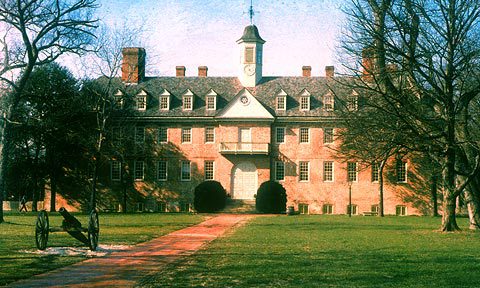Introduction
College of William & Mary is the second oldest college in America, founded in 1693. It is known as the “Alma Mater of a Nation” with four American presidents and sixteen members of the Continental Congress in the ranks of alumni. It is hardly stuck in the past, however; there have been thirty-nine Fulbright Scholars since the year 2000.
A tourist might stroll past a club meeting, ranging from Belly Dancing to the Harry Potter appreciation club. They’ll even see evidence of the Tribe athletic teams truly defining the term “student athlete,” winning championships and scholarships at the same time.
This family spirit lies in the interactions between students and professors. The relationships formed extend far beyond the classroom, reaching into real collaborative research and lasting friendships. Students aren’t confined to doing menial research; they regularly publish professional articles side-by-side with their professors.
The life blood pulses and thrives in our residence halls, governed by a policy of self-determination. The community shows its strength in our students helping friends and strangers, on campus and off. One doesn’t have to look far to find students volunteering and helping others; the majority of students volunteer on a regular basis. But the students’ volunteering interests aren’t confined to typical pursuits; it reaches even to the incoming freshman each year. Hundreds of upperclassmen move down to Williamsburg a week early for the sole purpose of helping incoming freshmen carry their things into their rooms, and settle in their new homes!
But, what if a student isn’t interested in participating in sports at a varsity level, just for recreation? No problem. The campus recreation center has just finished a renovation project that doubled its size. Our spirit certainly runs strong through many different kinds of athletic endeavors.
Community spirit whips through campus like a winter wind. It moves, it morphs, it pervades. It runs from every dorm to classroom to concerts to coffeehouses. The spirit burns inside every member of the Tribe, bursting through in the form of smiles, laughs, and friendships formed. This community spirit shows in our acceptance and tolerance of others. There is no other university in the country like it. It is singularly unique in the combination of personal attention, extraordinary academic opportunities, research capability, and on-campus student community.
The community spirit, the fire inside the students’ hearts, can be yours. But just touring the college, just visiting and admiring the pretty buildings, won’t reveal to you the true extent of our community. This spirit, this fire, is best experienced from within, as a member of the Tribe.
Our community shows off its muscle in our athletic teams. Our varsity athletes truly define the phrase “student athlete.” The Tribe is the Colonial Athletic Association (CAA) powerhouse among all sports, having won more than eighty conference championships. But this athletic prowess does not come at the expense of academic success, no not at all. The Tribe athletic teams can claim a 95 percent graduation rate, fifth best among all universities in the country. “Student-Athlete” indeed.
A former President of the college loved to end all of his speeches, e-mails, and official communication with the phrase “Hark Upon the Gale.” The phrase comes from the refrain of the college song, Alma Mater:
William and Mary loved of old, Hark Upon the Gale! Hear the thunder of our chorus, Alma Mater Hail! The word hark can be interpreted two ways, as “to listen” and “to think back on something.” The word gale is usually defined as a “very strong wind” but can also mean “a noisy outburst.” So one can interpret this in two ways, both seem quite appropriate to the college. Hark Upon the Gale! Listen to the strong wind! Remember our actions! Put in more direct terms: Feel our impact!

